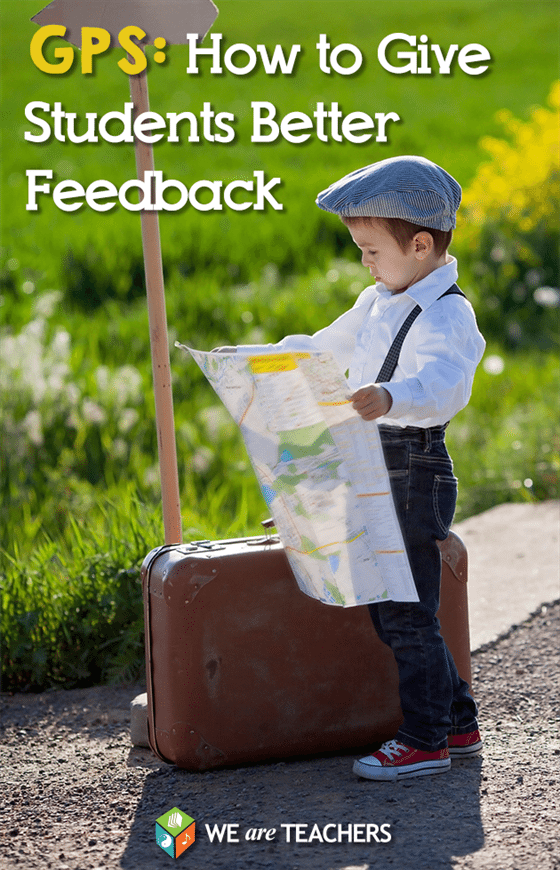If you want to see anger, watch me when I’m traveling and my GPS fails. I’ll be cruising and casual, listening to the seductive voice of the GPS robot lady. Sure sweetheart, I’ll turn left right here. Take exit 73? No problem, friend. And then disaster. “Rerouting” she says. She’s nonchalant. I’m freaking out. I curse the gods of global positioning for throwing my life into chaos. I have no idea where I am. I have no idea how to get to the destination. I’m going to get eaten by a land beast.
But when GPS works well—which it usually does—it is amazing. Once I get safely to my destination aided by the GPS, I can’t help but reflect on how helpful and reassuring GPS truly is. It does everything I need:
1. It shows a specific final destination—even what side of the road it’s on.
2. It tells me where I am currently—that’s me, the blue blinky dot.
3. It gives me specific steps to get where I need to go, in a freakishly near-human voice.
Apply those attributes to learning.
If we were to interview a random student in your classroom, could he/she answer these questions?
What is your final destination in learning?
Where are you currently with your skill or knowledge?
What turns do you need to take to improve your skill or knowledge?
Many students can’t answer these questions because they don’t have a system to help them. They don’t have educational GPS. What if the education in our classrooms were as well-guided as GPS?
Provide Feedback
In a learning context, GPS looks like quality feedback. John Hattie, that dude who studies studies, has identified quality feedback as a critical strategy for student achievement. In fact, he similarly compares feedback to looking for directions. Hattie describes the components of quality feedback as:
A) Feed-up
Make it clear to students what the learning target is. Explain what quality work looks like (known as “success criteria”). In other words, the destination.
B) Feedback
Identify where the student’s current skill or knowledge is relative to the learning target. This answers, “How is my progress?”
C) Feed forward
Provide specific action steps, information, or strategies that the student can use to get closer to the target.
Sound familiar? Quality feedback does for a learner what GPS does for a traveler. Rather than leaving your learners stranded in an educational dead zone, provide GPS feedback. Use GPS as an acronym to provide students with quality feedback.
G = Goal
How do I know my students have clarity on what success looks like?
– Show various models of quality student work that has met the standards.
– Provide a demonstration or walkthrough of a skill, noting what is creating success.
– Use the phrase, “You will know you are successful when ________,” with specific traits.
– Ask students to explain in their own words what the learning target is. Clarify as needed.
P = Position
In what ways have I shown the student his or her position relative to the goal?
– Use rubrics providing objective traits of each level (not just vague descriptions).
– Ask students to self-evaluate (again using rubrics).
– Conference in groups or one-on-one.
– Have students compare their work with a quality model, noting similarities and differences.
S = Step
What specific strategy, skill, or information does the student need in order to make progress?
– Provide one or two specific action steps to make progress (too many steps can be overwhelming).
– For whole-class feedback, model (or have a student demonstrate) a skill or strategy that will help them.
– Prebrief. Inaccurate learning can be hard to remedy. If you can anticipate what skills or strategies students might need, intervene before or during learning, especially when students are learning factual, lower-order knowledge.
If our students are lost, we can help them find their way. Whether we are teaching academic content or coaching students on behavior and class policies, we can do better than tossing them a map (assignment or procedure) and hoping they will figure it out. We can improve their intellectual journey with a few small but powerful adjustments to how we give feedback.
Administrators, take note!
Oh hey there, instructional coach or admin. GPS feedback isn’t just for students. Use GPS feedback to help teachers improve their practice as well. For many educators, the feedback they get is limited to a single evaluation at the end of the year—the equivalent of driving around a city, stopping, and hearing, “You are not at the destination. Rerouting. Proceed to the route.”
Got some hot tips for quality feedback? Share, my friends. Share.

